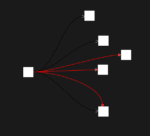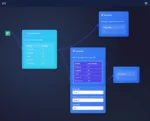
by tyler garrett | Jun 18, 2025 | Data Processing
In today’s fast-paced, data-driven world, businesses rely on real-time insights to make informed decisions. Every minute, massive amounts of data flow into systems, and conventional methods of updating entire datasets become increasingly impractical and expensive. Enter differential computation—the practice of intelligently calculating deltas, or incremental changes, instead of complete recomputations. By adopting differential computation, organizations optimize data processing, drastically reducing resource consumption and enhancing analytical agility. Whether you’re navigating complex streams of financial data, optimizing your marketing strategies, or tackling resource constraints in data engineering, mastering delta computations positions your business to leverage speed and flexibility. Let’s explore how differential computation transforms daunting computational challenges into efficient and impactful data solutions.
What Are Differential Computations and Why Do They Matter?
Imagine recalculating an entire report or dataset each time there’s a small update—a new customer purchase, a tweak in inventory levels, or an incremental change in database records. Historically, organizations updated datasets through batch recomputation, which meant regenerating the entire calculation from scratch. However, differential computation provides a smarter strategy by recalculating only what’s necessary, focusing explicitly on the differences or “deltas” between previous and current data states.
The rationale is straightforward but powerful: instead of wasting computing resources on recalculating a majority of unchanged data, differential computation efficiently targets only the updated data subset. Consequently, it drastically decreases the processing time and resource demands associated with large-scale computations. In scenarios such as real-time dashboards, transaction-heavy financial analyses, and constantly evolving consumer analytics, this technique delivers significant competitive advantages.
Furthermore, differential computation seamlessly supports the rapid scaling demands of modern businesses. By increasing throughput and responsiveness—critical elements in delivering effective data analytics and customer experiences—business leaders and decision-makers realize unparalleled agility in their strategic processes. Leveraging delta computation properly means drawing benefits across diverse organizational functions, from business operations to product innovation, ensuring data processing no longer becomes your bottleneck.
The Technical Strategy Behind Deltas: Calculating Only What’s Necessary
One question decision-makers commonly ask our team at Dev3lop is: what exactly is involved in identifying and calculating these changes efficiently? At the core, differential computation draws inspiration from event-driven architectures and data-stream processing techniques, making sure we track data changes meticulously. Fundamentally, differential computations rely on clearly identifying “state,” or known information at any given time, and tracking incremental shifts occurring due to events or data updates.
This process aligns closely with established software architecture paradigms like hexagonal architecture in data pipelines, providing clear boundaries for tracking changes and maintaining clean, decoupled system layers. By isolating state management, engineers can build and maintain differential logic easier, gaining precise control over the logic, accuracy, and transparency of delta computations.
Moreover, differential computation complements sophisticated verification and security frameworks. Advanced techniques, such as payload tokenization techniques for secure data processing, are naturally integrated. Ensuring secure data transit during incremental updates is crucial, especially for financial institutions or healthcare organizations requiring auditable and compliant data handling practices.
Finally, embracing event-oriented practices, like event sourcing for state restoration, simplifies differential computations. Event sourcing frameworks make it easier to reconstruct past states or replay transactions, which are key processes in validating the accuracy and correctness of delta computations across your data management ecosystem.
Differential Computation in Practice: Real-world Use Cases
At Dev3lop, we have observed real-world situations where differential computation significantly boosts efficiency, analytics effectiveness, and cost savings. Consider an ecommerce business analyzing customer purchase history intensively for insights. Instead of repeatedly recalculating every aspect of user behaviors after each new purchase, differential computation empowers systems to update analytics incrementally—ensuring continuously fresh insights without the cost overhead of extensive computations.
Sound interesting? Combine this capability with advanced analytics techniques, such as market basket analysis, and you possess a formidable capability for identifying complementary offerings and targeted upsells. Leveraging real-time updates ensures businesses can promptly shift strategic initiatives and react immediately to market conditions.
Another potent application lies in financial analytics. Institutions involved in markets with real-time trading systems can significantly benefit from differential computations to instantly update financial portfolios, risk scenarios, and forecasting models. Limiting recalculation to changes considerably reduces latency, lessens infrastructure costs, and ensures reliable operational results.
Additionally, differential computation becomes critical in scenarios where data governance is paramount. Implementing data governance practices, such as effective data asset deprecation workflows, is simplified. Tracking deltas helps companies proactively manage their data lifecycle, ensuring compliance, reducing asset redundancy, and effectively maintaining data quality and relevance in real-time.
Integration and Infrastructure: Implementing Your Differential Computation Strategy
Implementing efficient differential computation processes is not simply a conceptual exercise; it’s a strategic infrastructure choice that impacts your technology stack. For example, data engineers and architects frequently leverage infrastructure as code methods to script their infrastructure reliably. Combining infrastructure as code with automated processes for identifying and calculating deltas enables rapid scaling, effortless deployment, and continuous integration seamlessly embedded within your workflow.
Our experienced consultants at Dev3lop recommend businesses segment their infrastructure intelligently, separating systems-of-record that capture incremental changes from the analytical data environments responsible for computation. Clear boundary definitions help isolate responsibilities, create easier governance mechanisms, and simplify debugging processes.
As specialists in innovation and analytics, we’ve assisted organizations of different sizes and industries optimize their data pipelines. From non-profit institutions seeking streamlined data management through tailored business intelligence for non-profits processes to high-scale enterprise companies chasing incremental benefits, differential computation successfully integrates within various contexts.
Further benefits are realized by adopting intelligent agent-driven solutions for automating delta identification and calculations. Our tailored AI agent consulting services demonstrate the powerful impact of automation in differential computations, enabling businesses to stay agile, proactive, and adaptive to constantly changing analytical demands.
Roadblocks and Solutions: Common Challenges in Adopting Differential Computation
Despite its evident benefits, differentially computing data isn’t without its own hurdles. Organizations inexperienced with differential computations sometimes express concerns regarding complexity and data pipeline maintenance. Conditional calculation logic, state storage, and delta management can be perceived as challenging without effective guidance and implementation best practices.
The good news? These challenges are manageable and solvable. Adopting platform-agnostic data pipeline architectural styles, clearly defined through methodologies like hexagonal architecture mentioned earlier, greatly streamlines complexity. Establishing modular events and explicit state-handling processes clear ambiguities about managing deltas, mitigate risk of errors, and simplify long-term maintenance concerns.
Another common obstacle relates to tracing systems and event-based logging extensively. Effective event-sourcing strategies provide clear logs and straightforward traceability. When adopting differential computation as part of your organizational digital transformation, it’s vital to prioritize robust tracing capabilities and audit trails, ensuring transparent computation processes began with strategic thinking and clear integration planning.
Additionally, providing teams with adequate training and resources is paramount. Making experienced consultants and subject matter experts available at critical junctions helps ensure successful integration at both technological and process-oriented levels. Gradually integrating smaller-scale differential computation solutions and scaling can simplify the adoption phase greatly.
Conclusion: Achieving Optimal Results Efficiently Through Differential Computation
As data continues to evolve and emerge as both a strategic asset and possible liability, mastering efficient data processing strategies like differential computation isn’t just an advantage—it’s essential. Embracing the concept of harnessing “deltas done efficiently” enables organizations to maximize data value, reduce operational costs, and drastically improve throughput.
From building better infrastructure and embracing innovative automation methodologies to meaningful analytics with direct business impacts, differential computation provides unparalleled competitive advantages. At Dev3lop, our commitment to helping organizations leverage cutting-edge data solutions guides our differential computation strategies, delivering quantifiable results through smarter, faster, more effective analytics.
Ready to implement differential computations with confidence, clarity, and precision? Take advantage of data-driven insights faster, more securely, and efficiently with differential computation strategies crafted by experts.

by tyler garrett | Jun 18, 2025 | Data Processing
Imagine your business has expanded rapidly, data is flowing in faster than ever before, and you suddenly find your traditional algorithms bogging down under new constraints. Picture the ability to seamlessly swap out functionality in your software, changing algorithms smoothly, without extensive downtime or cumbersome rewrites. This flexibility is at the heart of the Strategy Pattern—a powerful design paradigm that allows developers to select and interchange algorithms dynamically at runtime based on the context. Whether you’re handling big data analytics, adjusting visual encoding channels, or improving your company’s ETL processes, leveraging the strategy pattern effectively can elevate your analytics workflows, maintain efficiency, and drive innovation effortlessly.
What Is the Strategy Pattern and Why Businesses Need It?
The Strategy Pattern is a behavioral design pattern defined in the famous “Gang of Four” (GoF) design patterns, which allows an algorithm’s behavior to vary independently from clients who consume them. Essentially, it encapsulates algorithms inside classes that implement a common interface, enabling them to be interchangeable and adapted at runtime. Instead of embedding complex decision trees or conditional statements that handle algorithm selection directly within your application logic, you employ a clean interface that delegates this choice dynamically. The immediate benefit is clarity in your business logic and remarkable flexibility.
Why does this matter from a business perspective? For modern enterprises driven by data, having the ability to quickly pivot on your technology strategy is paramount. Whether it’s changing the method you use to parse complex URL data into meaningful columns or rapidly adopting a different approach to analytics due to evolving market demands, being constrained by hard-wired choices hampers agility. The flexibility offered by strategic algorithm swapping keeps organizations nimble, enabling immediate responses to shifting requirements without extensive downtime or costly redevelopment. This ability to dynamically adjust operations significantly reduces overhead and ensures continued competitiveness in our rapidly evolving technology landscape.
Strategy Pattern in Action: Real-World Applications
Analytics and Reporting Flexibility
Data analytics platforms regularly need to recalibrate the strategies they use for data processing. Different customer segments often require varied processing strategies depending upon their datasets, compliance requirements, or the scale of operations. Consider a situation where your organization implements specialized algorithms for analyzing and manipulating vectorized queries to accelerate data workloads. Suddenly, a client demands an entirely different analytics structure aimed at a compliance-focused environment, requiring slower but ultra-accurate computation. Using the Strategy Pattern allows your solution engineers or developers to seamlessly interchange these algorithms, swappable at runtime without disrupting the existing code structure.
Additionally, organizations frequently deal with different distribution comparisons across diverse categories. Companies that regularly perform comparative analytics using ridgeline plots for distribution comparison stand to benefit greatly from a design pattern like this. They can implement different plotting algorithms depending on the dataset size, required complexity, and performance benchmarks, further highlighting how the strategic swapping of algorithms equates to agile analytics that can match real-time business and user requirements adeptly.
Tactical Decisions in Data Governance and Compliance
In today’s regulatory landscape, data governance is not merely a luxury; it’s an essential component of IT operations. A poor governance strategy can quickly tread the line towards data anarchy, resulting in compliance breaches or costly audits. The distinction between data democracy and data anarchy can be addressed effectively through employing the Strategy Pattern. Organizations can easily interchange governance strategies, ensuring compliance guidelines are ideated and implemented efficiently.
Furthermore, proper integration of strategy patterns facilitates the implementation of robust, dynamic Data Citizenship programs. Organizations confronting the challenge of effective training, processes, and system adoption succeed better when strategic flexibility is integrated into their framework. For effective Data Citizenship program technology implementation, the Strategy Pattern enables experts to test and modify approaches quickly, rapidly adapting or correcting the data governance strategy to meet continually evolving regulatory demands, user knowledge levels, or internal business needs.
Improving ETL Pipelines with the Strategy Pattern
Organizations heavily rely on enterprise data pipelines utilizing ETL (Extract, Transform, Load) to streamline processes, maintain data consistency, and assist in informed decision-making. However, as data scales, or business needs evolve, your ETL strategy’s role in your data analytics and business intelligence workflow may need rapid adjustments.
Operating under rigid ETL pipelines results in technical debt and inefficient maintenance efforts. However, adopting the Strategy pattern equips ETL architects with the flexibility to strategically interchange algorithms when system requirements shift, data grows in complexity, or robustness improvements become critical. For instance, if your business requirements shift from a legacy batch-based approach to a more modern streaming processing approach, the use of strategic design patterns enables straightforward changes without necessitating extensive rewrites of legacy ETL code.
Moreover, ensuring version-aware data processing for backward compatibility is another significant advantage achievable through strategic methodologies. ETL pipelines implemented using Strategy patterns can seamlessly facilitate legacy support, providing gentle transitions between older and newer processing versions, ensuring uninterrupted business continuity and stability at all times.
Avoiding Major Pitfalls and Data Mistakes
Without strategic flexibility in your applications, dealing with typical data-related pitfalls can become extremely challenging, especially in fast-paced environments such as startups. As identified in our analysis of the top 5 data mistakes found in startups, an inability to adapt quickly or architect flexibly consistently ranked high as a critical issue. Strategy patterns layer-in adaptability, helping startups avoid costly rewrites, stiffness in codebase design, and providing the necessary flexibility to pivot solutions when scalability becomes essential.
Addressing common technical/dataset mistakes like dealing transparently with integer overflow in data analytics also becomes easier through Strategy Patterns. Teams can easily implement a range of data-handling strategies—each tailored for the precision or the particular data types involved—quickly changing or refining strategies when inconsistencies are detected or unique data requirements arise. Organizations leveraging strategic algorithm management defend proactively against common data pitfalls, thus empowering analysts, developers, and stakeholders to engage more cohesively and productively.
Implementing and Maximizing the Strategy Pattern: Practical Recommendations
To bring the Strategy pattern to life within your organization, start by identifying functionalities or algorithms frequently subjected to change or updates due to evolving business scenarios or user feedback. Align these changes directly with business value objectives such as scalability, accuracy, and compliance flexibility.
It is prudent to encapsulate each specific algorithm within clearly defined classes or modules, sharing a common blueprint (interface). You then instruct your core application or process to reference the shared interface for algorithm processing instead of directly invoking each concrete algorithm. As your platform grows in complexity, utilize analytics to backend your decision-making, aligning algorithm choice with usage-driven effectiveness rather than guessing based on limited understanding of user patterns.
Most importantly, foster a culture embracing strategic flexibility, ensuring your team views algorithm changing—not as tedious chores—but as inevitable and beneficial outcomes from your agile design practices. For businesses leveraging cloud environments like our clients embracing Azure consulting services, this flexibility integrates seamlessly with scalable cloud architectures that can handle the real-time adjustment effortlessly.
Conclusion: Embrace Algorithmic Agility in Your Data Strategy
Leveraging the Strategy Pattern ensures your applications remain nimble, highly adaptable, and increasingly robust in the ever-evolving technological landscape. By logically decoupling functionality from algorithm selection, you not only enhance your technological resilience but significantly drive certain measurable advantages—rapid innovation, efficient management of analytics resources, cost reduction, and enhanced compliance positioning. With strategically embedded algorithm routings, your systems will remain agile, responsive, and strategically poised for efficient analytics execution and future growth.

by tyler garrett | Jun 18, 2025 | Data Processing
The era of big data is upon us, and in this digital landscape, data governance and traceability aren’t optional—they’re essential. Today’s enterprises grapple with immense complexity as their data journeys across countless integrations, transformations, and pipelines. Decision-makers dealing with large volumes of data require reliability, visibility, and clarity to act confidently. If data is the lifeblood of your organization’s strategy, end-to-end lineage is the map you must keep at hand. Visualizing your data transformations not only empowers your teams to make informed decisions faster but also ensures transparency and compliance from source to insight. This guide explores the necessity and strategic advantage of implementing robust end-to-end lineage solutions that enhance visibility, trust, and efficiency across your data pipeline ecosystem.
The Business Imperative for End-to-End Lineage
In the contemporary business environment, knowledge is power—but accurate and timely data is the catalyst that ignites decisions impacting your growth and profitability. Business stakeholders increasingly rely on ever-more granular and complex datasets to extract insights. Yet, without proper visibility into the transformations that data undergoes, you risk unstable analytics outcomes or flawed strategic decisions. This lack of visibility can inadvertently create vulnerabilities in regulatory compliance, data privacy, and accountability. Investing in end-to-end lineage helps your enterprise mitigate risk, build stakeholder confidence, and maintain a high level of transparency across your decision-making processes.
Strategically, adopting comprehensive lineage visualization techniques can lead to sustainable competitive advantages. It enables organizations to quickly understand and resolve data anomalies, clarifies conflicting views of enterprise data, and accelerates troubleshooting for analytics issues. For businesses looking to optimize customer interactions, having clarity on data lineage unlocks segmentation potential, enabling tailored experiences based on verified datasets. You can learn more about such strategic use cases from our article on benefits of segmenting your customer data.
Moreover, lineage visualization supports regulatory compliance—especially crucial in stringent legal environments like healthcare, finance, and privacy-sensitive industries. It’s no longer a “nice-to-have”—it’s critical infrastructure that ensures regulatory mandates and auditing standards are consistently met, reducing the risk of hefty fines or legal consequences.
Visualizing Data Transformations: From Source to Analytics
An organization’s data seldom remains static or isolated—it’s constantly moving, shaped, filtered, aggregated, and transformed on its journey between sources and end-user dashboards or analytics applications. End-to-end lineage is your systematic method for mapping every touchpoint and clearly visualizing these transformations. Mapping from ingestion through storage, intermediate processes, enrichment steps, and visual outputs provides unprecedented clarity on data origins.
Visualizing transformations usually involves clearly documenting processes in intuitive diagrams, structured mapping tables, or interactive lineage tools, enabling technical and business teams to interpret relationships between systems. Effective visualization makes it possible to pinpoint each step of a transformation process. For example, mapping techniques such as those discussed in our guide on business term to technical implementation mapping repositories enable stakeholders to quickly understand complexities without needing deep technical expertise. This clarity bridges the gap between IT and business stakeholders, enhancing internal communication and decision-making capabilities.
Additionally, modern visualization capabilities integrate sophisticated analytics methods, including graph-based analyses or network visualizations. Techniques like our discussed non-Euclidean visualization techniques excel at illustrating complex interrelationships visually, revealing hidden dependencies and transformations otherwise difficult to identify. With graphical visualizations backed by thorough documentation, your analytics stakeholders gain deeper insights into their data ecosystem, helping identify redundancy, reduce inefficiencies, and prevent costly errors.
Establishing Confidence through Data Reconciliation
Beyond visualizing transformations alone, one of the cornerstones of robust data lineage is integrating effective data reconciliation processes. Reconciliation identifies and addresses discrepancies between source and target datasets—an essential step in building lineage confidence. Solutions like those explained extensively in our piece on data reconciliation patterns between source and target systems allow technical experts to pinpoint where data integrity may become compromised.
The primary goal is ensuring consistency and quality throughout pipeline transformations. If your analysts or business users cannot wholly trust the accuracy or consistency of the data they’re using for strategic decisions, even best-in-class analytics practices lose their value. A solid lineage approach incorporates end-to-end reconciliation checkpoints, enabling validation at every transformation step and data intersection. Each reconciliation verification step not only improves data accuracy but also serves as a persistent historical log, helpful when troubleshooting or validating reported analytics.
Through reconciliation and alignment, data lineage initiatives strengthen accountability—technical teams and business decision-makers alike can trust that their data is not only insight-rich but also trustworthy and clean. By nurturing this trust, your organization enhances both strategy execution and responsiveness, empowering proactive decision-making.
Key Technical Patterns of Lineage Visualization
Deep diving into technical lineage visualization principles, some well-adopted approaches stand out for structuring and illustrating transformations clearly. These include table-level lineage through defined relationships, explicit documentation of SQL queries and transformations, graph database implementations, and network diagramming of interconnected data ecosystems.
SQL remains a foundational language for detailing precise transformations carried out within database systems. Precise usage of operators, such as outlined in our deep dive on mastering range filtering with the SQL BETWEEN operator and techniques for defining new table structures in SQL, allows technical teams to succinctly and explicitly define transformation logic. Coupling SQL documentation clarity with intuitive visual mapping further boosts comprehension for non-technical stakeholders, ensuring each transformation step is easy-to-follow.
Edge bundling, another compelling technical technique shared in our insights about bundling techniques for edge reduction, reduces visual complexity within data lineage diagrams. Edge bundling simplifies network visualization yet retains vital interconnection information, reducing cognitive load and improving user experience. Combining backend techniques—such as Node.js backends powering lineage applications with critical business logic—can streamline the technical handing of impact lineage visualizations. To explore Node.js implementations further, view our dedicated Node.js consulting services.
Implementing Lineage into Your Strategic Data Governance Framework
Successfully implementing end-to-end lineage requires thoughtful incorporation into your strategic governance framework. Lineage visualization shouldn’t be seen as simply “another technical project,” but rather as a crucial pillar of your overall data strategy. Consider aligning your lineage strategy with human-centric design concepts, as outlined in our article on adopting human-in-the-loop data pipeline design patterns, to ensure data transparency and accountability throughout.
Start by understanding critical business requirements to define a lineage strategy effectively. Involve cross-functional teams early—from analytics to compliance, stakeholders should clearly communicate their needs. Understanding business-level definitions ensures your visualization resonates with end-users, drives adoption, and enhances data literacy across your enterprise.
Lastly—and perhaps most crucially—consider lineage as an active, evolving practice. Regular reviews must ensure accuracy even as your data ecosystem continues to grow. Removing unnecessary dashboards, as discussed in our provocative article on killing dashboards before they harm your strategy, and continually pruning inaccurate or outdated lineage mappings are part of maintaining a lean, efficient governance framework.
Conclusion: Turning Complexity into Competitive Advantage
Data ecosystems might look complicated, and lineage initiatives may seem daunting, but clarity is a game changer. Organizations that effectively visualize their data transformations as part of end-to-end lineage greatly enhance transparency, compliance, accountability, and strategic effectiveness.
Your data is your organization’s most valuable asset—unlocking the confidence needed to wield it strategically starts with mapping its journey clearly. With the right tools, techniques, and expert partnerships, your business will confidently overcome complexity, enabling innovation and strategic growth.

by tyler garrett | Jun 12, 2025 | Data Processing
Imagine building a robust data pipeline framework where every change counts. Like an expert chess player who plans ahead, a modern tech leader needs confidence that each move can be unmistakably tracked, reversed, or reinstated. For those in charge of complex data-driven decisions, implementing an effective undo/redo mechanism is not just a convenience; it’s an essential strategic capability. By applying the Command Pattern—one of software engineering’s most intuitive yet powerful design patterns—you grant your team the tactical advantage of flexibility, traceability, and resilience. Whether optimizing your ETL workloads or enhancing data analytics workflows, understanding how to leverage this architectural pattern will propel your analytical capabilities forward and empower smarter business decisions.
Understanding the Command Design Pattern
The Command Pattern is an object-oriented design technique that encapsulates a request or an operation into an object, allowing parameterization of clients with various behaviors, queueing commands, logging actions, and facilitating the undo/redo of operations. At its core, every “command” encapsulates state information, thereby structuring the application logic into distinct, manageable units.
In data analytics workflows—particularly in ETL (Extract-Transform-Load) processes—errors and changes are inevitable. Commands help isolate actions into encapsulated “units of work,” which brings simplicity when needing to undo or redo steps. For instance, a complex data pipeline could involve transformations on millions of records; without the command pattern, reverting these transformations might be cumbersome and error-prone. By adopting commands, each transformation can be easily undone or reapplied—making data governance clearer, audit trails simpler, and production deployments more reliable.
Furthermore, the Command Pattern promotes strong separation of concerns. Commands responsible for initiating transformations or extraction processes can be elegantly decoupled from the pipeline’s execution logic, greatly reducing code-complexity and improving maintainability. This clear architecture enhances cognitive ergonomics, reducing the cognitive load on engineers working with complex data displays and pipelines.
How Undo/Redo Embeds Reliable Governance in Pipelines
Data governance is paramount in modern analytics. Consider a data pipeline that pulls data from numerous sources, performs transformations, and populates a central analytical database. Mistakes in data ingestion or transformation processes are inevitable in evolving data landscapes. Having granular undo/redo capabilities ensures small mishaps remain exactly that—small, reversible, and manageable.
By employing a well-structured command-based undo/redo mechanism, changes in the pipeline can be tracked thoroughly. This empowers your organization to maintain clean audit trails and maintain conformity to business rules—principles explored extensively in our article on conformity dimension management in data warehousing. Undo and redo functionalities don’t only safeguard against trivial human errors but also equip the pipeline with robust error handling, recovery mechanisms, and auditability required for stringent compliance requirements.
Moreover, from an analytics standpoint, accurate and transparent pipeline management aligns with embedding business terminology into your architecture. Using commands to encapsulate particular business operations translates technical pipeline logic directly into business terminology, making business stakeholders more comfortable engaging with the pipeline logic—a philosophy we strongly endorse in our guide on semantic layer implementation for business terminology.
Implementing Undo/Redo in Data Pipelines Step By Step
Step 1: Define Your Command Interface and Concrete Commands
The first step is to establish a common command interface—typically consisting of execute(), undo(), and optionally redo() methods. Each significant action in your pipeline becomes a concrete implementation of this command interface. For example, a “LoadCustomerDataCommand” or a “TransformOrderDatesCommand”. Clearly defined commands make each pipeline step explicit, documentable, and auditable.
Additionally, employing commands aligns beautifully with integrating multiple data sources. For instance, commands can encapsulate transformations needed during identity graph construction for customer data integration, simplifying complex multi-step aggregation processes with clearly defined, reversible actions.
Step 2: Command Executor & History Management
A command executor object manages the execution of commands and controls history for undo/redo functionality. It maintains stacks or lists of executed commands and facilitates moving backward and forward through executed actions. This historical tracking enhances auditability, decreases manual intervention and ensures robust pipeline health.
For improved reliability and compliance, commands can be serialized, persisted, and replayed. Your command history can thus become an invaluable mechanism for debugging and restoring precisely to any prior state. This structured logging mirrors strategies highlighted in our comprehensive post on the top data strategies to implement in your organization.
Step 3: Implement Robust Error Handling and Recovery
With commands, error handling becomes significantly stronger. Each command clearly defines its ‘undo’ logic, ensuring the rollback mechanism is consistent and precise. This enables easier identification of problematic sections and speedier recovery. Coupled with analytics—such as text-based sentiment analysis in Python using Natural Language Toolkit (NLTK)—you can identify patterns of errors within your pipeline commands, driving pipeline innovations and refining continuous improvements across your organization.
The Benefits of the Command Pattern for Data-Driven Organizations
Adopting the Command Pattern offers strategic advantages. It creates transparency, enabling auditors or stakeholders to reconstruct every decision and transformation meticulously. Enhanced transparency directly increases pipeline stability—making your organization’s analytical capabilities more consistent and reliable.
From an operational standpoint, encapsulating changes into commands enables increased scalability and manageability of complex data projects. Teams can confidently deploy data pipeline upgrades, assured that mistakes can be painlessly rolled back without compromising entire processing jobs, maintaining high organizational productivity even under continuous integration and continuous delivery (CI/CD) conditions.
Additionally, employing commands can facilitate advanced functionalities like macro-operations, batching commands, or scheduling, further showcasing your organization’s innovation in the data analytics space.
Best Practices and Considerations when Applying the Command Pattern
While implementing undo/redo functionality through command patterns is powerful, it’s crucial to consider certain aspects carefully. Commands should always be designed to be independent and isolated from each other, minimizing side effects and dependencies. Such careful architecture enhances testability and ultimately pipeline quality.
To maintain long-term effectiveness, command logs must be clearly structured, accurately logged, and readily retrievable. Also, consider regularly managing command histories—archiving or pruning historical commands based on retention policies comes highly recommended for sustained performance and manageable data volumes.
Finally, always incorporate the command pattern within a thoughtful data governance strategy. Maintain documentation for all commands and establish clear naming conventions and standards, ensuring downstream stakeholders remain confident and operational continuity is preserved effortlessly.
Transforming your Data Pipelines with Command Patterns
Employing the Command Pattern for undo/redo functionality substantially improves data pipeline resilience, auditability, maintainability, and scalability. By allowing confident execution, tracking, and recovery from errors in data-driven pipelines, you give your analytics and data operations teams a solid foundation to innovate.
As data-driven decision-making becomes ever more critical, tools focusing on integrity, accuracy, and recoverability are paramount. Consider integrating the Command Pattern as part of your strategic technical infrastructure—and if necessary, collaborate with seasoned data architecture consultants who specialize in troubleshooting, optimization, or other specializations, such as our MySQL consulting services. The time invested upfront will yield substantial operational and strategic returns.
Ready to turn your data pipelines into a robust, auditable, and error-resistant ecosystem? Let’s begin this journey together, embracing innovation and clarity at every technical step.

by tyler garrett | Jun 12, 2025 | Data Processing
In today’s hyper-competitive digital landscape, swiftly managing and analyzing complex datasets is not just advantageous—it’s essential. Organizations increasingly leverage multidimensional arrays, or tensors, to tackle large-scale data analytics, predictive modeling, and machine learning tasks. Mastering tensor operations at scale provides businesses with a powerful strategic advantage, enabling rapid insight generation, robust decision-making, and improved operational efficiency. In this deep dive, we’ll unveil the mechanics and strategic advantages of optimizing tensor computations, highlighting advanced methodologies, best practices, and innovative frameworks propelling decision-makers rapidly ahead of competitors.
Understanding Tensors: More Than Just Arrays
While many business leaders have grown accustomed to standard data warehousing and simple analytics, the emergence of tensors represents a leap forward—far exceeding traditional approaches. A tensor is essentially a generalized multidimensional array capable of efficiently managing complex datasets from multiple sources simultaneously. Unlike basic tables or simpler data structures, tensors inherently preserve relationships and dimensions within data, positioning them as powerful tools for modeling and insightful analysis.
With dimensions that can easily extend to thousands, tensor-based data representation quickly outpaces conventional spreadsheet or database structures when dealing with intricate data such as image streams, natural language processing tasks, or time-series analytics. Utilizing tensors ensures data analysts and engineers can systematically approach even the most obscure inter-relationships buried within large data domains, simplifying the extraction of meaningful insights.
Focusing on dimension conformity enforcement in data integration, tensors directly facilitate consistent representation across various analytical contexts, proving instrumental for optimizing cross-departmental collaboration and decision-making efficiency.
Efficiently Scaling Tensor Operations
Without meticulous strategy, scaling tensor operations can quickly introduce complexities—such as performance bottlenecks, resource limitations, and costly inaccuracies. Successful implementation and scaling demand not just high-quality hardware interactions but also strategically optimized tensor-processing implementations via powerful frameworks and software design patterns.
Today’s most successful analytical companies harnessing tensors rely on accelerated parallel computing approaches, distributed tensor computation, and highly efficient libraries like TensorFlow and PyTorch. These frameworks leverage strategic approaches such as batch processing, data parallelism, and GPU acceleration, driving speed and efficiency at scale. Leveraging Node.js applications specialized for data-intensive environments—explored further in Dev3lop’s comprehensive Node.js consulting services—can substantially improve performance, scale easier, and maximize the efficient delivery of analytical insight at scale.
Another critical performance optimization derives from thoughtful software design and implementation techniques, such as applying the factory pattern for injecting dynamic processing logic. Such approaches allow adaptable and reusable tensor processing pipelines and architectures, reducing long-term maintenance and management burdens while increasing flexibility.
Harnessing Advanced Analytic Techniques with Tensor Computations
Gaining the maximum strategic advantage from tensor operations requires organizations to access advanced analytic methods and algorithms capable of processing and analyzing tensors at highly dimensional scales. Techniques such as deep neural networks, convolutional networks, and tensor decomposition methodologies allow businesses to identify hidden insights typically inaccessible via traditional analytic approaches.
Tensors facilitate powerful techniques such as causal inference frameworks for business decision support. Such frameworks leverage tensor representations, enabling business analysts and data scientists to quantify impacts of individual variables and drive impactful decisions based on solid analytical forecasts.
Beyond standard numeric analysis, tensors inherently support visualization techniques designed explicitly for multidimensional datasets. Visualization strategies like contour plotting techniques for continuous variable domains vastly enhance interpretability and transparency, bridging the gap between technical and strategic business stakeholders, and facilitating clearer, better-guided business actions.
Integrating Multimodal Data through Tensor Operations
Today’s analytics organizations rarely operate with homogeneous data. Multimodal data integration, encompassing diverse sources such as audio, visual, textual, and sensor data, presents extraordinary complexity yet equally significant analytical potential. Tensors naturally facilitate the integration, management, and analysis of heterogeneous data streams, significantly improving analytical validity and predictive accuracy.
For businesses combining diverse input channels—such as customer interactions, sensor metrics, and digital logs—utilizing tensor operations for comprehensive multi-dimensional modeling could dramatically simplify otherwise cumbersome data ingestion and analysis processes. A powerful example is multi-modal sensory analytics integrating audio, visual, and text data, replenishing strategic leaders with high-confidence analytical tools to better understand user experiences and optimize business outcomes.
Effectively ruled tensor computation ensures seamless integration of diverse data sources and typically delivers valuable outcomes, including improved customer segmentation, predictive profiling, and decision-support systems enhancing business strategy clarity and operational execution.
Navigating Common Pitfalls in Tensor Operations Implementation
As useful as tensor analytics prove in innovating business decision-making, organizations frequently encounter practical pitfalls. Without expert guidance, tensor implementation can easily encounter inefficiencies and inaccuracies. It’s imperative to remain vigilant for common pitfalls, like inadvertently adopting the most overrated tools in modern data engineering, which rarely produce expected outcomes trivializing ROI.
Another common pitfall lies in inconsistent data element management across multiple data domains, risking analytical integrity. Robust tensor computation demands robust efforts towards data element standardization across multiple domains, ensuring consistency and reliability throughout your analytical processes.
Finally, solidifying robust data governance strategies will help organizations identify that 1% of data that’s quietly costing you 10% of revenue. Prevention of such data-based financial leaks positions tensor operations strategically not only as innovation drivers but as key defensive agents within your operational analytics and strategy.
A Roadmap to Excellence: Adopting Tensor Ops at Scale
Adopting tensor operations at scale begins with clear strategic alignment matched by practical technical execution. Organizations should start by assessing internal competencies regarding multidimensional analytics, infrastructure readiness, and validating the anticipated benefits against measurable business outcomes. Embracing purposeful and tactical engagements, organizations should prioritize high-impact projects first, tightly aligning technical capabilities with strategic corporate objectives and vision.
Effective delivery stems from adopting agile methodologies, rapid prototyping, and iterative testing—maximizing practical implementation success compared to overly theoretical implementations. Leveraging expert consulting partners scalable in capability ensures expedited ROI and minimized internal resource strain. As a committed business partner, Dev3lop prioritizes delivering cutting-edge tensor operations solutions tailored for precision business execution and analytical unmatched strategy—fueling clients’ sustained advantage across industries.
As your organization considers the strategic gains associated with mastering tensor ops at scale, investing deliberate focus on careful planning, targeted adoption, and robust operational integration becomes crucial. The scalable future of data-driven business analysis depends upon harnessing the power, flexibility, and reliability inherent in optimized tensor operations.
Successfully scalable tensor operation adoption today translates to ongoing business innovation, confident strategic decisions, and sustainable competitive advantage tomorrow. Let your analytics team leverage tensor operations to unravel data insights that truly propel your business forward.

by tyler garrett | Jun 12, 2025 | Data Processing
In today’s digital ecosystem—where data, analytics, and innovation blend to shape critical business decisions—the concept of maintaining context across systems, APIs, and service boundaries has never been so compellingly significant. Imagine orchestrating an extensive analytics pipeline to deliver insights seamlessly from raw data to strategic dashboard visualizations. When state and context are mishandled or lost, these carefully crafted analytical journeys collapse, leaving business leaders stranded without meaningful intelligence. This makes context propagation not simply a technical convenience, but rather an essential strategic capability. In this guide, we explore context propagation—an advanced technique that keeps state intact across process boundaries and services—and how leveraging this approach empowers analytics-driven organizations to realize their full potential.
Understanding the Urgency of Context Propagation
Context propagation, at its core, is about ensuring continuity of information state and meaningful transactional insights throughout the entire software development lifecycle and production ecosystem. Enterprises engaged in advanced analytics consulting understand the significance of managing state as data flows between different boundaries—be they APIs, microservices, backend systems, or user interfaces. Without context, systems fail to deliver personalized experiences, analytics lose traceability, and decision-making processes become obscured.
Consider scenarios like interactive visualization platforms where end-users zoom and pan through complex datasets. A robust zoom and pan implementation in interactive visualizations requires context awareness to deliver consistent experiences. Likewise, propagating user session information across touch-enabled visual analytics solutions developed via sophisticated multi-touch interaction designs ensures intuitive, personalized explorations. Without propagating context from user actions down into backend analytical engines and across subsequent UI interactions, the richness of user journeys becomes diluted and ineffective.
Thus, maintaining state across boundaries is not merely about technical elegance; rather, it serves pragmatic business goals, enabling better analytics-driven insights, efficient debugging and observability, seamless user experiences, and improved execution traceability. Context propagation ensures organizations leverage meaningful data flows rather than confront disconnected chunks of information.
Techniques and Patterns to Handle Context Propagation Efficiently
Metadata-Driven Context Implementation
A key strategy businesses adopt to preserve context across boundaries is leveraging metadata-driven context implementation. Implementing context data through metadata enriches the entire dataset or request lifecycle, allowing developers and analytics architects to track granular context information behind each interaction. This methodology enables developers to create robust solutions where services consuming this metadata-driven context clearly understand operational details—such as data lineage, user roles, security parameters, or data access control rules—without heavy overhead or overly complicated session implementations.
This approach is especially useful in data governance and access management scenarios, where propagating identity or role context across distributed systems ensures consistent and secure data access. Combined with robust patterns like centralized context management designs (using Redis or distributed cache systems), organizations empower efficient propagation of metadata, ensuring workloads and analytics remain systematically aligned while maintaining speedy performance and scalability in large analytical workloads.
Distributed Tracing for Contextual Visibility
Another powerful technique to maintain context is distributed tracing, widely adopted in modern analytics and microservices architectures. Companies build systems with the ability to trace each user’s action across the distributed boundary, retaining state-based insights that are critical to debugging and optimizing complex pipelines. Such tracing simplifies analytics—such as identifying performance bottlenecks when optimizing shuffle operations in distributed data processing.
By propagating transaction IDs, request lifecycle information, and analytical context (such as filters, subsets, aggregations, or transformations), analytics teams not only achieve faster troubleshooting but also receive enriched insights on the data lineage itself. Organizations that invest in distributed tracing democratize operational visibility, allowing everyone from technical staff to executive leaders to access context-rich analytics rapidly and efficiently.
Leveraging Context to Enhance Data Visualization and Analytics
With strong context implementation, visual analytics solutions and executive dashboards deliver significantly greater business value. Properly preserved context enables complex analytical visualizations like parallel coordinates plots for multivariate data analysis to become more intuitive and practically useful. By ensuring a consistent propagation of context, users effortlessly explore detailed visualizations, methodically interact with the underlying data, and derive actionable intelligence reflective of their original intent.
Similarly, context-aware solutions allow specialists to leverage effective geospatial insights via complex visuals like the cartogram implementation for geospatial data distortion or distribution visualization techniques such as the violin plot implementation. By incrementally maintaining critical context, these analytics solutions become more responsive and meaningful, providing actionable insights directly aligned with strategic business requirements.
These context-rich visual solutions also form the backbone of powerful decision-making environments—such as when creating executive dashboards that drive real decisions. Correctly propagated context ensures an executive dashboard remains seamlessly interactive, personalized, and indicative of strategic organizational data points, that truly inform data-driven business decisions within the enterprise.
Performance Considerations and Scalability
Developing context-aware, analytics-driven ecosystems demands balancing functionality with performance efficiency and scalability, particularly when faced with large datasets or big data scenarios. Propagating context state across boundaries inevitably introduces complexity and potential performance overhead if poorly implemented. Therefore, precise implementation techniques need careful consideration to manage costs and maintain quick responsiveness across analytics solutions.
Adopting modern approaches such as memory-mapped files (seen in comparisons like memory-mapped files vs traditional I/O performance benchmarks for large datasets) allows enterprise data architects to reduce latency and improve performance efficiency in context propagation scenarios. Paired with careful usage of caching mechanisms and strategic context state minimization, designing systems optimized for propagation means organizations balance rich analytics features with responsive, scalable solutions.
Furthermore, analytics teams benefit significantly from understanding varying performance profiles of analytical technologies—such as query performance optimization practices through understanding SQL wildcards for pattern matching in queries—which strategically enrich context propagation within analytical queries while maintaining optimal performance. Performance-aware context propagation, thus, ensures solutions stay responsive, contextual, and scalable.
Implementing Context Propagation Successfully Across Your Organization
Context propagation offers significant advantages, but the key to successful adoption lies in strategic implementation across your organization. Start by assessing which boundaries and interaction points would benefit most dramatically from consistent context handling. Break down data silos, escalate contextual visibility between teams, and foster a culture of informed communication geared toward holistic analytics solutions.
Working with expert analytics partners specialized in advanced analytics consulting ensures strategic alignment and effective execution of your context propagation strategy. Efficient workflows, optimized system performance, security best practices, and effective data visualization design principles reap maximum returns from context propagation efforts. Involve stakeholders across diverse teams—including software developers, business analysts, data scientists, and leadership—to guarantee alignment, ensure seamless integration, and drive actionable results across all analytics-driven initiatives.
As your organization moves forward in leveraging predictive analytics, interactive visualizations, and innovative data innovations, strategically propagating context shifts from an optional nice-to-have to a core capability. It drives unparalleled analytics efficiency, ensures smooth cross-functional collaboration, and strengthens strategic analytics capabilities.
Final Thoughts on Context Propagation
Context propagation is not an isolated technique applied in analytical vacuum—it is a holistic process which holds organizations closer to strategic, actionable insights than ever before. By properly managing state and context across boundaries, enterprises gain richer insights, streamlined workflows, and powerful analytics-driven decisions at every touchpoint. Invest in strategic context propagation to ensure your organization remains competitive, responsive, and innovative in today’s rapidly evolving technological landscape.






























